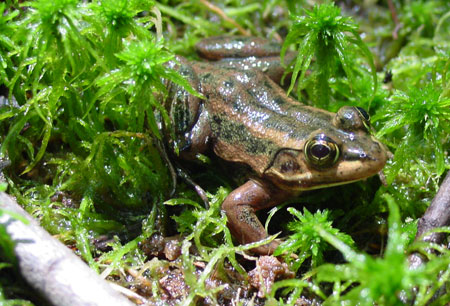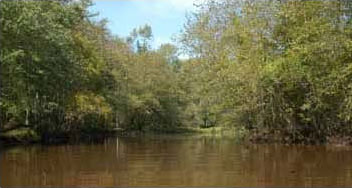Field Guide to Maryland's Frogs and Toads (Order Anura)
Main_Content
Carpenter Frog (Lithobates virgatipes) |  Adult Carpenter Frog, photo courtesy of Corey Wickliffe | | Former Name: |
Size:
|
Appearance: |
Habitats:

Photo of Habitat for Carpenter Frog, courtesy of Jay Killian
|
How to Find: |
Distribution in Maryland:Found only in a handful of coastal plain counties. This species is listed as rare to uncommon in Maryland. If found, please report sightings to the Maryland Wildlife and Heritage Service.  | | For More Information: |
|
